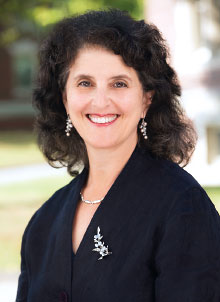It Takes a Village: Mothers With SUDs Often Lack Support in Getting Treatment
Abstract
Fear, controlling partners, judgmental health care professionals, and a lack of resources weigh heavily on the minds of mothers and mothers-to-be with SUD.

Mothers who have substance use disorder (SUD) are like most other mothers in that they want to make their children’s lives better and keep their children safe. Many, if not most, would seek treatment for their SUD as part of their drive to be the best mothers they can be, yet they encounter barriers at every turn, ranging from unsupportive friends and family to logistical issues with transportation to laws that make them feel threatened by the prospect of losing their children if they get the help they need.
A recent meta-analysis in the Journal of Substance Abuse Treatment took a deep dive into how mothers and mothers-to-be with SUDs felt about treatment—what motivated them, what would make it easier for them to enter and stay in treatment (dubbed “facilitators” by the researchers), and what barriers they faced. The results, gleaned from 23 studies, revealed that they often feel like they have to choose between competing priorities. For example, many felt that spending money and time on treatment would take away from the money and time they needed to take care of their children.
“What kept rising from the data were the binds that mothers are put into if they make the choice to go to treatment. It felt like for every facilitator, there was a barrier,” lead author Erin R. Barnett, Ph.D., an assistant professor of psychiatry at the Dartmouth Geisel School of Medicine, told Psychiatric News.
Barnett and her colleagues separated the facilitators and barriers into three key themes: internal factors within the woman; relational factors involving health care professionals, family, and friends; and structural factors such as systems and treatment programs.
The Fears Within
The most common facilitator in the analysis overall, and the most common internal facilitator, was the desire to be a good mother. If the women were maltreated as children or their own parents had SUDs, they often made a conscious decision to try to be better parents themselves and to break the intergenerational cycle of maltreatment and substance use. They also wanted to retain custody of their children or regain custody if they had lost it.
Overall, and internally, the most common barrier to seeking treatment was the fear of losing custody of their children should the women come under the scrutiny of health care professionals and the authorities. The fear is well-grounded, given most state statutes require that health care professionals report infants who are born exposed to opioids or other substances.
“Not all states automatically remove the baby, but many states require reporting of substance use during pregnancy, and for a good reason,” Barnett said. She explained that when families first appear in court or in custody hearings, often it is not so much the substance use that mandates children’s removal from their parents’ custody, but whether there is any sign of neglect or abuse. Most notably, a parent’s abuse of prescription opioids, heroin, or methamphetamines acts as a red flag to look for neglect because often in such cases there are no other caregivers who can step in to look after the children, Barnett added.
Moreover, more than a dozen states have statutes that impose criminal or civil penalties on pregnant women who have opioid use disorder (OUD). A study published in JAMA Network Open in March 2019 suggests that such statutes may be keeping pregnant women with OUD from seeking treatment (Psychiatric News).
Connection Counts
The women often spoke of the importance of relationships in facilitating treatment, notably relationships with health care professionals. They valued health care professionals who had gained their trust, supported their desire for treatment, and helped them find the right treatment program without making them feel judged. Yet some described health care professionals and staff who lacked empathy as barriers to seeking treatment, as such health care professionals did not inspire their trust. Other internal barriers included feelings of guilt, embarrassment, or stigma.

Addiction psychiatrists and other mental health professionals should check themselves for implicit biases against people with SUD, says Shelly F. Greenfield, M.D., M.P.H.
It would be beneficial for health care professionals who work with pregnant women and mothers with SUD to reflect on societal attitudes and stigma, said Shelly F. Greenfield, M.D., M.P.H., a professor of psychiatry at Harvard Medical School, the chief academic officer of McLean Hospital in Massachusetts, and a member of APA’s Council on Addiction Psychiatry.
“Psychiatrists and other mental health professionals can facilitate engagement in addiction treatment by examining their own potential implicit biases toward individuals with substance use disorders and adopting empathic stances to all people with substance use disorders,” said Greenfield, who was not involved in the research. “As this study demonstrates, this is especially true for women who are mothers, given the societal bias and internalized stigma of women with SUDs in general.”
The women in the analysis also noted the importance of their own parents—mostly their mothers, siblings, older children, and female friends as important facilitators. In contrast, many of the women considered their relationships with their romantic partners to be barriers, often describing their partners as unsupportive. Some of the partners were physically and financially dominating, and some women were worried about how their relationships would change or worsen if they got treatment for their SUD.
“This is another bind, where if they get treatment, they risk losing their relationship, making their partner angry, or being ostracized from their community of friends,” Barnett said. “Choosing life without addiction may mean choosing to lose partners and friends who use drugs. But they may have good reasons to stay with a partner. The partner may be paying the rent or the partner’s mother may be helping out with watching the kids.”
Some partners may not see SUDs as a medical matter, said Kimberly Yonkers, M.D., the Katz Family Chair in the Department of Psychiatry at the University of Massachusetts Medical School/UMass Memorial Medical Center, who was not involved in the research.
“They may view substance use disorders as a moral weakness. Most people still do not see addiction as an illness,” Yonkers said.
Many of the women said that group treatment was beneficial because of the connections they made with others who had similar experiences. This comes as no surprise to Greenfield, who was lead investigator in the treatment development trial for the Women’s Recovery Group (WRG), an evidence-based, gender-specific group therapy to address the needs of women with SUD.
“In our trial, these motivators and barriers were discussed extensively, including stigma toward women, especially mothers, and the role of other primary relationships, including the presence or absence of partners,” Greenfield said. She added that women in the WRG trial discussed caregiving, notably motherhood, as both a barrier and a motivator with respect to treatment for SUD.
Structural Hurdles
The most common structural facilitators among the women centered on childcare, such as childcare during appointments at outpatient treatment programs or the ability to have their children reside with them at intensive day treatment or residential programs. Not being able to have their children with them served as a barrier as the women felt that treatment would take time away from their children and fulfilling their roles as mothers.
“Treatment that includes residential care for women and their children may decrease risk of loss of custody and enable some women to seek and receive the treatment they need,” said Greenfield.
Finances figured prominently in the women’s perception of barriers, notably the costs associated with treatment, a lack of insurance coverage, a lack of available programs, and long wait times. These results bolster the findings of a study published in JAMA Network Open in August 2020 that found that pregnant women with OUD face high out-of-pocket costs, a dearth of health care professionals who offer treatment, and difficulty merely getting an appointment with a health care professional who can prescribe buprenorphine (Psychiatric News).
Given the logistical and financial barriers to treatment, the women noted several structural facilitators such as transportation assistance, including financial assistance to help them pay for gas, and insurance coverage.
“The research had some clear implications, including assistance with childcare and transportation,” said Yonkers. “These are less of an issue in a pandemic with people at home, but people still need to attend some treatment programs—for example, to pick up medication for opioid use disorder.”
Barnett said that the analysis highlights a loss of community and support for mothers with SUD.
“We don’t have our villages anymore, and there isn’t an easy way to fix that,” she said. “There need to be system changes to recreate villages, including things like subsidized childcare, longer maternity and paternity leave, and leave for grandparents, that can recreate village life. Otherwise, it’s asking way too much of mothers, especially those with addiction.”
This study was supported by the U.S. Department of Health and Human Services. ■
“Difficult Binds: A Systematic Review of Facilitators and Barriers to Treatment Among Mothers With Substance Use Disorders” is posted here.
“Association of Criminal Statutes for Opioid Use Disorder With Prevalence and Treatment Among Pregnant Women With Commercial Insurance in the United States” is posted here.
“Association of Pregnancy and Insurance Status With Treatment Access for Opioid Use Disorder” is posted here.



